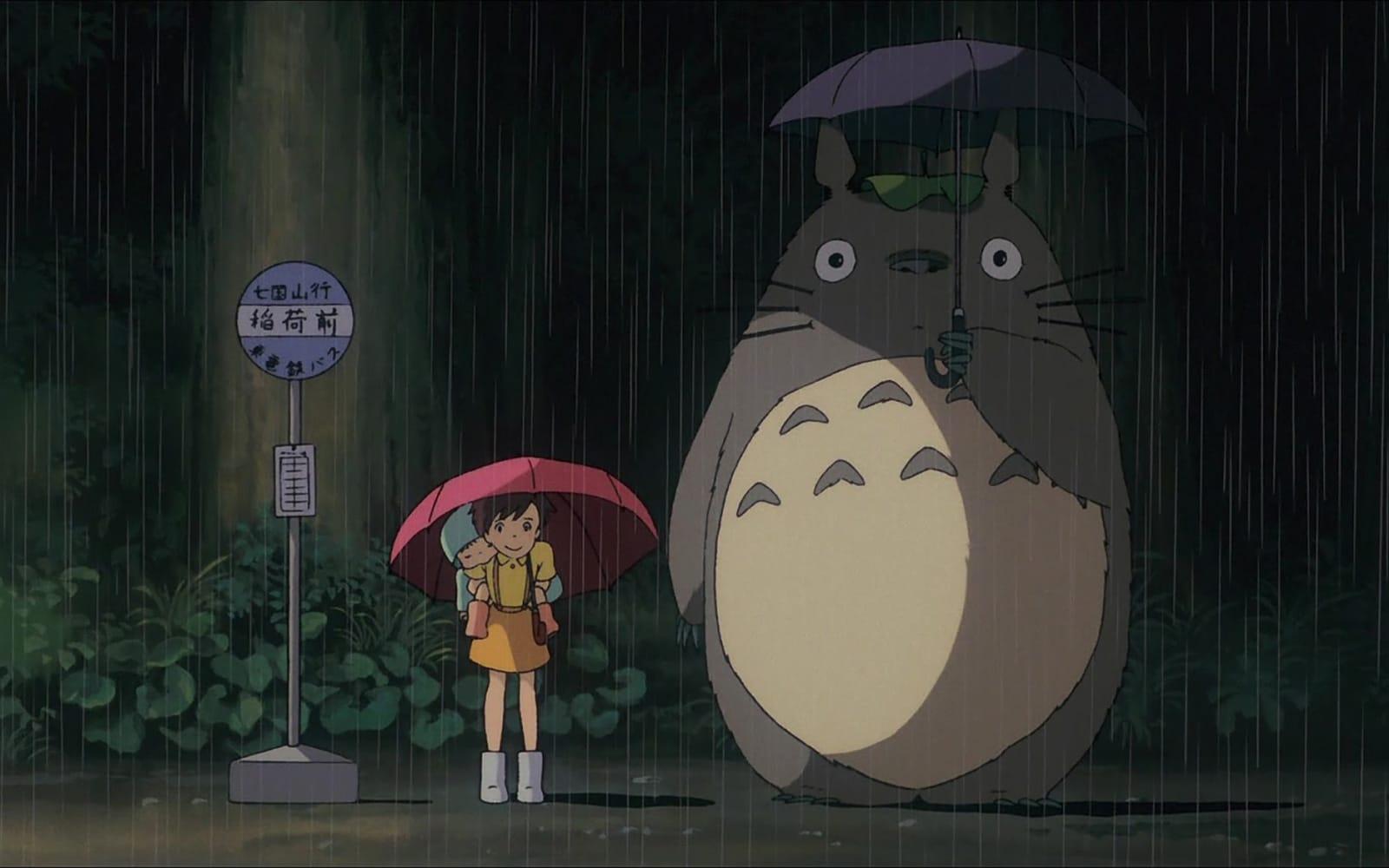
I’m sure it must’ve looked somewhat odd to the videostore clerks as I wandered through the Children’s section of their store. Here was a grown man wandering through aisles of Pokemon, Power Rangers, and a slew of other Saturday morning fare. But buried in the midst of all of that stuff was a hidden gem, a movie that I consider to be one of those rare, magical cinematic moments… Hayao Miyazaki’s My Neighbor Totoro.
My Neighbor Totoro was the second Miyazaki film I’d seen, the first being Disney’s domestic release of Kiki’s Delivery Service. There are certainly similarities between the two films; the richly detailed worlds the films create, the feisty heroines, and most importantly, the sense of joy and pleasure I got watching the two films.
My Neighbor Totoro centers on two young children, Satsuki and her younger sister Mei. They’ve recently moved into a new house in the countryside with their father. Their mother is in the hospital recovering from a sickness, and the daughters eagerly anticipate her return. The first part of the film is fairly slowmoving and pastoral. We watch the two girls adjust to living in the country, discovering the new world around them, and making new friends. That all changes one day when Mei encounters a little squirrel-like creature scurrying along. Giving chase, she wonders into the forest and eventually stumbles onto a sleeping Totoro, the giant, bear-like spirit of the forest who only appears to children.
Although Mei’s story seems fanciful at first, Satsuki also encounters the mighty Totoro, and the girls share several wonderful adventures with their new friends. However, things go wrong when it’s discovered that the girls’ mother won’t be returning home as soon as previously thought. Determined to find out if their mother is okay, Mei sets off by herself to see her, and Satsuki must turn to Totoro’s aid to locate Mei.
However silly and childish the whole thing may sound, it’s precisely because it is silly and childish that My Neighbor Totoro is so memorable. As with Kiki’s Delivery Service, the major crisis of the film is, in reality, not that serious. But Miyazaki treats it as a child would, however irrational that may be. As a result, it takes on terrible proportions. Miyazaki treats his characters as real children; they are equally frustrating and enchanting. We see the things in the film as they do, and when combined with Miyazaki’s eye for detail, the film is a beautiful thing to watch.
What I love about Miyazaki’s creations are the little things. Miyazaki pays great attention to the tiny details that don’t seem memorable at the time; a snail crawling up a stalk, a frog croaking in the rain, a gentle night-time breeze. Miyazaki’s landscapes are picture-perfect with lush colors; sunsets fill the screen with golden light, clouds dreamily float by, and the whole countryside seems alive. When Mei discovers spirits in the house, he focuses on her stubborn determination to catch one, and when she first meets Totoro, her reactions are appropriately silly and giddy. Miyazaki treats Totoro’s joy at the sound of raindrops hitting an umbrella as a momentous occasion. And when Totoro makes the trees grow, or when he and the girls go for a ride on Totoro’s magical top, it’s a special, magical moment.
The only complaint I have is that all of the other characters in the film are completely overshadowed by Satsuki and Mei. The girls’ father is well-meaning, but in constant bemusement at his girls’ antics; there’s the old woman who looks after the girls and falls into every “grandmother” cliche possible; and then there’s the neighbor boy who seems to develop a crush on Satsuki. I was surprised at the way Miyazaki treated the neighbor boy, showing the boy’s crush by his silly little actions around Satsuki, rather than in words. But the film is definitely focused on the two sisters and their adventures; everyone else is completely secondary.
I’m not ashamed to say that I get a little teary-eyed whenever I see a Miyazaki film. I almost lost it when I watched the criminally-overlooked Princess Mononoke. I find it very easy to get caught up in Miyazaki’s films, mainly because his films often resemble how I remember seeing the world as a child. I remember making little discoveries as a child. I remember discovering a secret hiding place on my grandparents’ farm, of swimming in a cold creek and playing with my cousins in the cornfield. I remember a time when I climbed trees simply for the thrill of being high up off the ground, when the alley behind my house became a fort for all of the neighborhood kids, when going off the beaten path actually meant something.
Now, I have my college education, career, and everything else pertaining to “adult” life. Now I think about my childhood adventures every once in awhile, such as when I’m paying off my car loan or writing a check for bills, when I long for the “good old days” when I didn’t have to deal with loans and bills. Those times used to be so much more to me, and watching a movie like My Neighbor Totoro reminds me of that.
